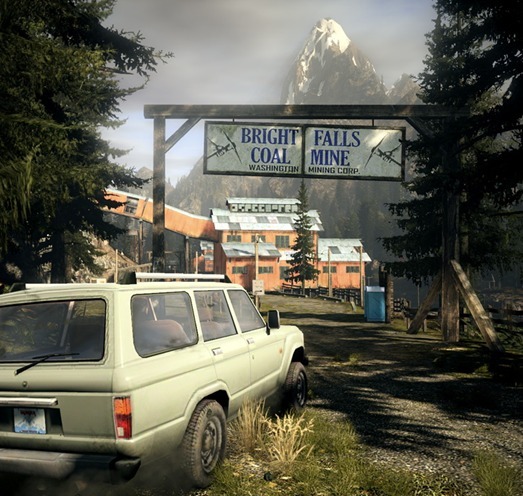A deep action thriller that wears Poe and Twin Peaks influences on its sleeve, yet fails to resolve them in a satisfying manner.
Before sitting down to type, I considered checking behind the monitor for danger, out of a mix of curiosity and survival instinct. I blamed this on my experience of Remedy’s May release, Alan Wake.
Five years in development, Alan Wake’s brand of third person supernatural action has since been updated by heavyweight names of a similar ilk. A resurgent Resident Evil, Silent Hill: Homecoming and Alone in the Dark all invigorated thriller conventions first popularised 13 years before this game’s long-awaited release.
Each of these titles picked up on tropes long considered stale: Resident Evil the point-scoring, combo-chaining action fest; Silent Hill the visceral shocks and nasty puzzles; and Alone in the Dark’s use of light was incredible, flawed as the game was.
Strong comparisons exist between Alan Wake’s action and that of Silent Hill: Homecoming, while the sound and feel are distinct homages to the David Lynch TV series Twin Peaks. This latter impression is particularly strong in the early game.
Voice acting is right out of the PC question-em-up Gabriel Knight 2, with professional results. However, the dialogue is occasionally stilted and often saved by the writing. I didn’t get any feel as to how the people of the Pacific Northwest talk, as none of the game’s characters have accents.
Remedy has taken cues from the PS2 cult classic Fahrenheit, pushing character interaction to the front in order to set the tone. This is a dangerous thing to do in video games, which are relatively fledgling, as most big-bucks directors still can’t do it in the cinema. The game often succeeds in the attempt, usually in its lighter moments, and I would have liked to have seen more made of the minor characters.
The game’s eponymous hero draws in all the best parts of Johnny Depp’s character from Secret Window, mixes in foibles from a half dozen James Herbert books, and decorates his darker moments with Edgar Allan Poe lampshades. Sadly, his hoodie/smart jacket combination makes him look like a character from Mallrats.
As the game began development not too long after Max Payne 2 was released, a number of similarities exist with Alan Wake’s graphics and physics engines. Some of the vistas seen in the game rival those of Oblivion, but interiors seem to have the same paper-thin quality of Remedy’s previous titles.
My strangest criticism is that while I encountered three or four basement doors, I couldn’t open any of them, which I found strange for a horror/thriller title. In its favour, action elements have been rounded out with some nice animations which make combat feel very weighty and satisfying.Tributes to the MaxThe more time I spend on Alan Wake, the more I make favourable comparisons with Remedy’s first proper release, Max Payne (2001). Much like that game, the scattered Twilight Zone interludes and episodic breakdown is what is drawing me back to play, more so than any amount of genre action.
The episode-ending Roy Orbison and Nick Cave tracks were just two of the beautiful touches which delighted me. The Finnish studio seems to leave marks on its games as unmistakeable as those of Bungie or Gearbox.
It is my impression that early promise isn’t quite sustained all the way through the game, which I thought a tad overlong at 12 hours. Perhaps this is the sign of development fatigue or a rush to get the game finished. No doubt, the inevitable sequel and downloadable content will no doubt add a lot of polish to what remains a very enjoyable game.
Stronger Gabriel Knight 2 (Grail-hunting epic through Germany’s darkest woodlands)
Weaker Alone in the Dark (Full of ideas, riddled with failings)
